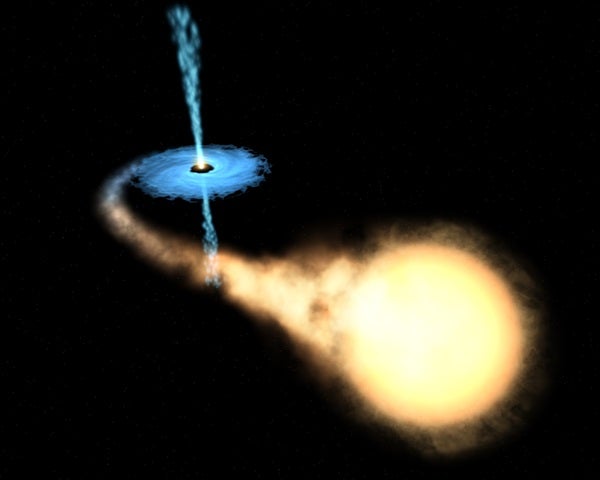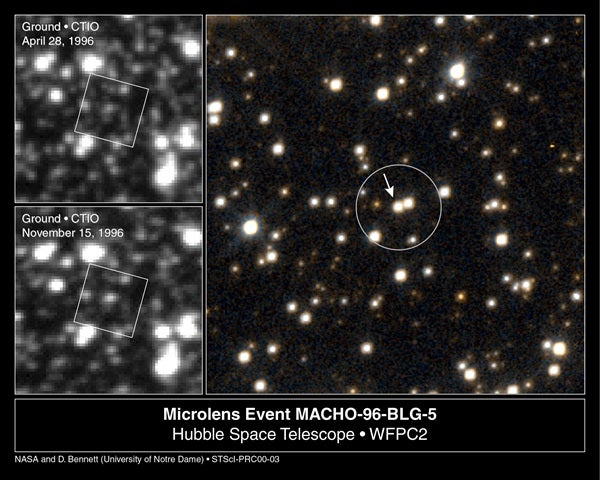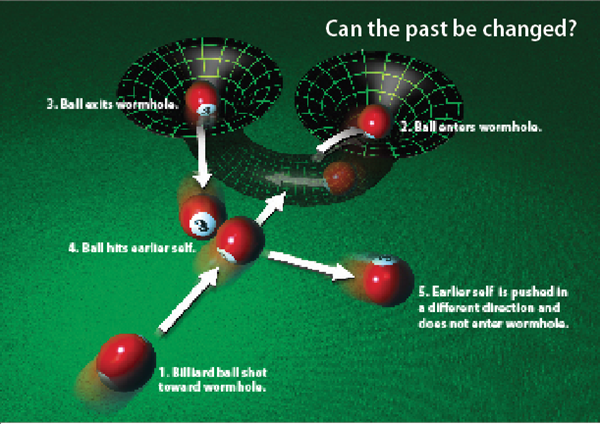This story originally appeared in the February 2006 issue of Astronomy.
When H. G. Wells put pen to paper in 1895, he started something that shows no sign of abating. The Time Machine, Wells’ first novel, was social commentary disguised as science fiction. But his idea that time travel might be possible has fired the imaginations of authors, screenwriters — and scientists — ever since.
Wells proved to be ahead of his time scientifically as well as artistically. He imagined time as occupying the fourth dimension 10 years before Albert Einstein portrayed the cosmos as a 4-dimensional space-time continuum in his special theory of relativity. Einstein’s ideas opened the door to scientific inquiry into time travel.
Yet the subject remained fringe science for decades. Not so now. Today, researchers publish articles in leading scientific journals that discuss not only the possibility of time travel but how it might be accomplished.
Although the day when you can hop into a time machine and travel anywhere — or anywhen — you want lies a long way off, limited forms of time travel into the future already exist. Thanks to their greater speed, airline passengers emerge from their trips having aged slightly less than their earthbound compatriots. Now, some scientists speculate travel into the past — something Wells’ time traveler could do with the pull of a lever — might be possible one day.
Newton’s time
The idea of time travel never gained a foothold in the 200-plus years Isaac Newton’s view of the universe held sway. Newton considered time, and space for that matter, as immutable. “Absolute, true, and mathematical Time, of itself, and from its own nature, flows equably without relation to anything external,” he wrote in his masterwork, Principia.
That all changed with Einstein. He believed — and a century of experimental results backs him up — time is relative. In 1905’s special theory of relativity, he started with two postulates: The laws of physics should look the same to every observer in uniform motion (moving in a straight line at constant speed), and the speed of light in a vacuum should be the same for every observer in uniform motion.
The only way these two conditions can be met simultaneously is if time passes at different rates for different observers. The effects can be measured even in everyday life. Take a trans-Atlantic flight, and you’ll climb off the airplane about 10 nanoseconds (10 billionths of a second) younger than those you left behind.
The effects don’t become obvious unless you travel near the speed of light. Jump on a spaceship and travel at close to light-speed, and you literally could cover light-years in just a few days by your reckoning. On your return to Earth, however, you’d find that perhaps thousands of years had elapsed. In effect, you would have traveled to the stars as well as deep into the future.
As crazy as this travel into the future may sound, experiments verify it. In 1971, Joe Hafele of Washington University in St. Louis and Richard Keating of the U.S. Naval Observatory in Washington borrowed four atomic clocks from the Naval Observatory and took them on around-the-world airplane trips. Although the planes traveled at less than one-millionth the speed of light, the clocks ticked slower than those left at the observatory — and by just the amount predicted by special relativity.
Subatomic particles called muons offer more-striking proof. In a laboratory, muons survive only a few millionths of a second. When energetic cosmic rays strike Earth’s atmosphere, however, they create a shower of muons traveling at close to the speed of light. If these high-speed muons decayed at their normal rate, they wouldn’t make it a mile. But most survive the 12-mile (20 kilometers) trip to reach Earth’s surface.
Einstein’s gravity
Speed is one way to leap into the future. Gravity is another. Ten years after he devised special relativity, Einstein developed his general theory. In it, he extended the theory to all types of motion and showed that gravity is a manifestation of space-time curvature. Just like special theory, general relativity offers a method of time travel: a strong gravitational field.
And just as with special relativity, the effects can be seen on Earth. The Global Positioning System (GPS) comprises 24 satellites, each of which carries an atomic clock and orbits about 14,500 miles (23,300 km) above Earth. A GPS receiver calculates your location by measuring how long it takes signals to travel from several satellites.
Both forms of relativity come into play with this equipment. Special relativity causes the atomic clocks to run slow because the satellites move at a fast rate relative to Earth’s surface. General relativity has the opposite effect. Earth’s gravitational field is weaker in orbit than on the surface, so the atomic clocks speed up. The system has to take both effects into account to produce an accurate position.
The time effects of general relativity grow with the strength of the gravitational field. Visit the vicinity of a neutron star — the collapsed core of a massive star that contains a few times the Sun’s mass in a sphere the size of a modest city — and time runs at a rate about 25-percent slower than it does on Earth
Traveling near a black hole may not be the wisest move, however. Most known stellar-mass black holes, those that arise from the collapse of a massive star at the end of its life, lie in binary systems where the black hole pulls in gas from its companion star. As the gas swirls into the black hole, it forms an accretion disk where friction raises the temperature to millions of degrees. The resulting X rays would fry any astronaut who gets too close.
You wouldn’t want to get too near one of the handful of isolated black holes known, either. Tidal forces near the event horizon of any stellar-mass black hole would stretch any person (or spaceship, for that matter) into a long, thin piece of spaghetti.
The best bet for a would-be time traveler is a supermassive black hole. These beasts, typically found at the center of a galaxy, weigh millions or billions of times what the Sun does and have event horizons the size of the solar system. There, tidal forces remain bearable, and an astronaut could swoop in close without being torn apart.
A time traveler would only want to get near the event horizon, not cross it. For the same reason time slows to a stop there as seen from the outside, astronauts would see the universe’s entire history pass before their eyes. If you could survive the journey into the black hole and come out again, you would have to enter a different universe.
Through the past darkly
So far, time travel seems to be a one-way trip to the future. Astronauts one day may be able to travel super-fast — or dive close to a black hole or neutron star — and age more slowly than those they left behind. These intrepid travelers would return to Earth in the distant future.
But many time-travel aficionados would rather travel to the past. University of Connecticut physicist and time-travel researcher Ronald Mallett counts himself in this group. “My father died of a heart attack when I was 10, and shortly after that, I read The Time Machine. I thought if I could build a real time machine, I could go back and warn him.”
Traveling that direction in time proves a tougher theoretical challenge for physicists. The first inkling that going to the past might be possible came from Austrian-born mathematician Kurt Gödel. In 1949, while at the Institute for Advanced Study in Princeton, New Jersey (where Einstein also worked), Gödel used general relativity’s equations to describe a rotating universe. He found that such a universe allows an astronaut to visit his or her own past by traveling through space. Gödel’s discovery did nothing to bring time travel closer to reality — observations show the universe as a whole does not rotate — but it did show general relativity allows travel to the past.
In 1974, Tulane University physicist Frank Tipler showed that an infinitely long cylinder rotating close to the speed of light could accomplish the same thing. Astronauts circumnavigating the cylinder could visit their own past. As with Gödel’s solution, Tipler’s idea won’t lead to a practical time machine — it’s impossible to build anything infinitely long.
Wormholes to the rescue
Another idea proves more promising. As early as 1935, Einstein and a colleague, Nathan Rosen, realized that general relativity allows the existence of “bridges” in space-time. Originally called Einstein-Rosen bridges, these space-time tubes now have the more poetic name “wormholes.” (Princeton University physicist John Wheeler, who coined the elegantly descriptive term “black hole,” also thought up “wormhole.”) Wormholes act as shortcuts that can connect distant regions of space-time. So, by voyaging through a wormhole, you could travel between the two regions faster than a beam of light moving through normal space-time.
Wormholes have their own problems, at least as practical time machines. Theorists once believed wormholes could exist only for an instant before “pinching off” and collapsing into black holes. But they figured a way out of this quandary, thanks in part to a science-fiction story.
In the early 1980s, Cornell University astronomer Carl Sagan began writing his novel Contact. In it, heroine Ellie Arroway detects a radio signal from the vicinity of the star Vega. The coded message contains instructions for building a machine that ultimately takes her to a planet deep in the galaxy.
In the original manuscript, Sagan had Ellie fall into a black hole on Earth and re-emerge out of a black hole near Vega. But he wanted to be sure the science made sense. He sent the manuscript to his friend and black-hole expert Kip Thorne at Caltech. Thorne realized the story needed to use a wormhole instead of black holes but knew the pitfalls. So he, along with some students, tried to fix them.
The key problem was how to keep the wormhole from collapsing. They found it could be done by lining the wormhole with material that exerts enough outward pressure to counteract the wormhole’s inward squeezing. Ordinary matter won’t do the trick. The material has to be what physicists call “exotic matter,” which has a pressure comparable to the pressure that keeps a neutron star from collapsing. It’s not the kind of stuff you’ll find at the local hardware store, but it’s not ruled out by the laws of physics either.
Making a time machine
It wasn’t long before Thorne and his colleagues realized that a stable wormhole could form the basis for a time machine. The trick involves sending one end of the wormhole into the future by either rapid motion or gravity, just like the spacefaring astronauts talked about earlier.
One possibility would be to bring a large asteroid to one of the wormhole’s mouths. As mutual gravity draws them together, you need to accelerate the asteroid to near the speed of light. A clock at this wormhole’s mouth now will run much slower than a clock positioned near the stationary mouth. Keep the moving mouth in motion until you achieve the time difference you want, say 10 years, then bring it back. If you jump into the mouth that stays behind, you’ll exit the other end 10 years earlier. Go the reverse direction, and you’ll pop out 10 years in the future.
To use gravity instead, you could put one end of the wormhole near a neutron star. Keep it there as long as you need to accumulate the desired time lag, and then return it to the vicinity of the other mouth. Assuming your civilization has mastered rapid space flight, you could easily pass through the wormhole into the past and return to your starting point before you left.
The wormhole time machine allows travel into the past, but you could never go back to a time before the machine was constructed. That could answer Cambridge University theorist Stephen Hawking’s question about why we don’t see any time travelers in our midst. If the first time machine is invented in, say, the year 2525, we wouldn’t see any travelers until then. But after that, tourists from the future might overrun Earth like they do Yosemite on a summer’s day.
Opening the floodgates
After Thorne and his collaborators published their wormhole idea in 1988, research on time travel enjoyed a major renaissance. In 1991, Princeton University astrophysicist J. Richard Gott devised a time machine that uses cosmic strings — exceedingly thin, high-density strands of material left over from the Big Bang. Although searches for cosmic strings so far have turned up empty-handed, many cosmologists think they exist.
Gott’s device would employ two infinitely long and straight cosmic strings oriented parallel to each other. Then, the strings would have to move in opposite directions at speeds within a millionth of 1 percent of light-speed. The solution has at least one advantage over a wormhole time machine — it requires only normal matter to make it work.
Ronald Mallett has a more down-to-Earth proposal. In 2000, he published his idea for a time machine that could, conceivably, be built in a laboratory. Using Einstein’s assertion that mass and energy are equivalent, Mallett proposes generating a gravitational field from the energy of light. Using a “ring laser,” which creates a continuously circulating beam of light, he believes he can produce a gravitational field strong enough to allow time travel into the past.
For the moment, Mallett is thinking both big and small — big in the sense that he’s seeking funding for a prototype; small in the sense that he’ll be attempting to send a neutron into the past. If he can show his contraption works, the rest, as he says, is engineering.
A world of paradox
The possibility of travel into the past raises a host of troubling prospects. A big one is whether causality can be violated. In everyday life, cause always comes before effect. A pitcher throws a baseball over home plate, then the batter swings and hits it. The batter never hits the ball before the pitcher throws it.
But if heading back in time is possible, causality might not hold. Think of a billiards table where the pockets are actually the mouths of a wormhole. What if you shoot a ball into one end of a wormhole and it travels a few seconds back in time, only to emerge from the wormhole’s other end in time to collide with its younger self. If the collision deflects the ball so it doesn’t enter the wormhole to begin with, where did the deflecting ball come from? The question of causality reaches its zenith in the grandfather paradox (see “Tread lightly, young man” on page 38).
No one expects people to be whipping through time at any point in the near future — or past. Most proposed time machines, at least those capable of sending humans into the past, would require the skills of a supercivilization. But the recent spate of theoretical advances suggests, at the very least, the laws of physics don’t rule out the possibility of time travel.
It’s a notion that likely would please H. G. Wells. A concept he developed out of whole cloth opened new avenues for some of the finest minds of the past 100 years. If only we could go back and tell him.














